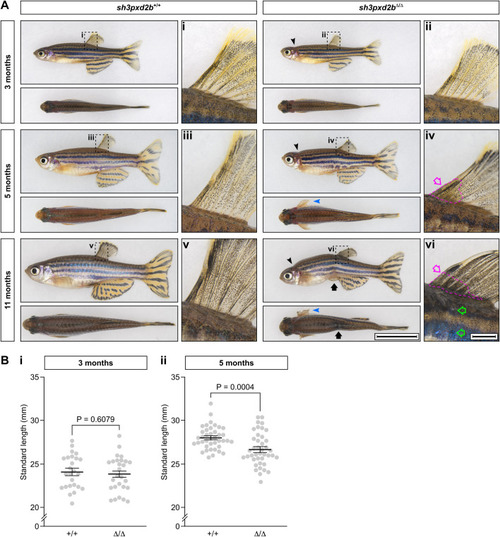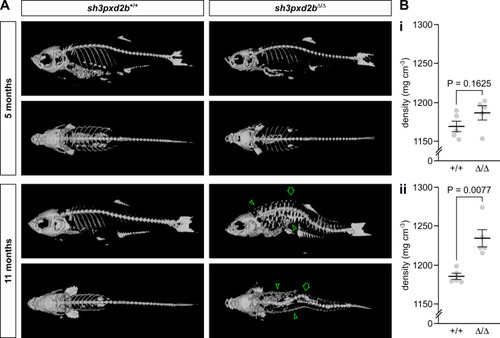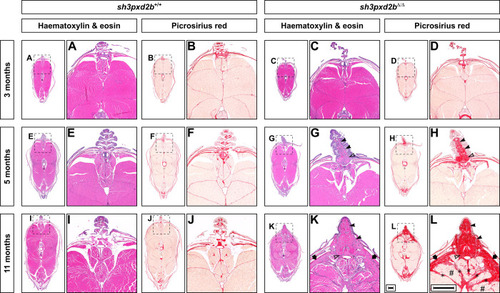- Title
-
The novel zebrafish model pretzel demonstrates a central role for SH3PXD2B in defective collagen remodelling and fibrosis in Frank-Ter Haar syndrome
- Authors
- de Vos, I.J.H.M., Wong, A.S.W., Taslim, J., Ong, S.L.M., Syder, N.C., Goggi, J.L., Carney, T.J., van Steensel, M.A.M.
- Source
- Full text @ Biol. Open
|
PHENOTYPE:
|
|
PHENOTYPE:
|
|
PHENOTYPE:
|

ZFIN is incorporating published figure images and captions as part of an ongoing project. Figures from some publications have not yet been curated, or are not available for display because of copyright restrictions. EXPRESSION / LABELING:
|



